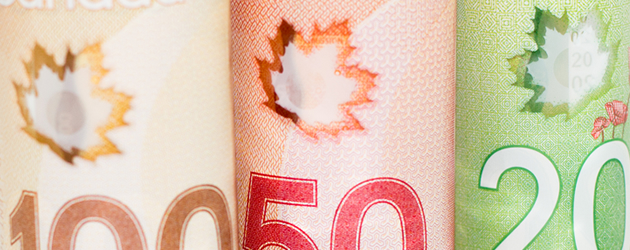
The Pound to Canadian Dollar exchange (GBP/CAD) has strengthened by over 22 cents since March, with Sterling appreciating by over 7 cents in the last month alone.
There are three main reasons for the Pound’s tumultuous gains against the Canadian Dollar.
UK Economic Revival
The first, and possibly the most important, thing to consider is the renaissance of the British economy. During the first quarter of 2013, Sterling reached a string of multi-year lows against the majors, including near-3-year lows against the Canadian and US Dollars and record all-time lows against the Australian and New Zealand Dollars.
With the threat of a triple-dip recession weighing over the UK economy and Britain’s AAA credit rating slashed by Fitch and Moody’s, it was looking very much like more quantitative easing was on the cards.
However, the asset purchasing target was not bolstered and Britain’s fortunes began to improve. UK GDP was reported at 0.4% for the first quarter, which meant that the dreaded triple-dip was avoided. Furthermore, a -0.1% contraction in Q1 2012 was revised upwards to 0.0%, meaning that Britain did not actually even experience a double-dip.
Growth accelerated to 0.7% in the third quarter and private sector output began to print positively, sending investors flocking back to the Pound.
In August, with things looking up for the UK economy, recently appointed Bank of England Governor Mark Carney attempted to convince businesses and consumers that interest rates would remain low for a prolonged period of time. Carney told the public that interest rates would remain at the current record low of 0.50% until Unemployment fell below 7.0%, or until the CPI inflation rate was forecast to be above 2.5% in 18 months time.
However, the Governor’s forward guidance policy was interpreted by analysts as an exit strategy and, due to Britain’s nascent revival, speculative traders began to price-in the possibility of a much sooner-than-forecast rate hike. This had a massive impact on Sterling, sending the Pound higher across the board.
In Q3 UK GDP accelerated to 0.8% and since then Service Sector output, which contributes around 75% of British growth, has printed at a 16-year high. Both Construction (6-yr high) and Manufacturing (2.5-yr high) PMI results have also printed impressively in Q4. Things are going so well for the British economy that the BoE has been forced to upgrade its forecasts to suggest that Unemployment will hit the 7.0% threshold as early as Q3 2015.
The Pound now stands at a 4-year high against the Canadian Dollar, but there are two other major factors that have contributed to Sterling’s ascent.
Fed Taper Speculation
The second thing that has weighed on the ‘Loonie’ is the threat of a reduction of stimulus from the Federal Reserve. In September 2012 the Fed began pumping $85 billion per month into the financial system in the form of asset purchases. This scheme, known as QE3, drove US Treasury Yields down and made credit very cheap for traders. Subsequently, investors’ appetite for risk skyrocketed and this led to a spurt of investment in higher-yielding, higher-risk assets such as the Canadian Dollar.
However, back in June the Fed announced that it plans to slowdown the pace of its asset purchasing scheme and this had a negative impact on the ‘Loonie’. Since then taper speculation has intensified causing markets to deleverage from riskier assets in preparation for the day when the Fed finally pulls the plug on quantitative easing. This has had a significant negative impact on the Canadian Dollar.
BoC Rate Outlook
The third factor at play here with the GBP/CAD pair is the Bank of Canada’s policy outlook. Back in April 2012 former BoC Governor Mark Carney told markets that he expected the benchmark Canadian interest rate to rise steadily from the current 1.00% level throughout 2014. This boosted the ‘Loonie’ across the board.
However, in October this year, after over a year of hints at a rate hike, new BoC Governor Stephen Poloz cut Canada’s growth outlook and removed the rate hike bias quote from his Central Bank statement due to a softer outlook for exports and business investment and concerns over the global economy. The dovish decision led to massive depreciations for the Canadian Dollar against most of the majors.
Long GBP/CAD
So, with confidence in the British economy improving with virtually every data release, QE3 taper speculation escalating and the Bank of Canada now looking more likely to cut interest rates than hike them, it is entirely possible that the Pound to Canadian Dollar exchange rate (GBP/CAD) could continue to strengthen over the coming days and weeks.

Comments are closed.